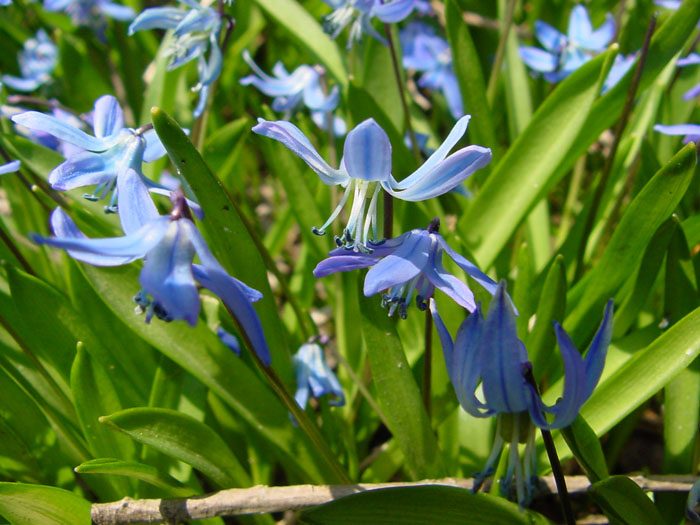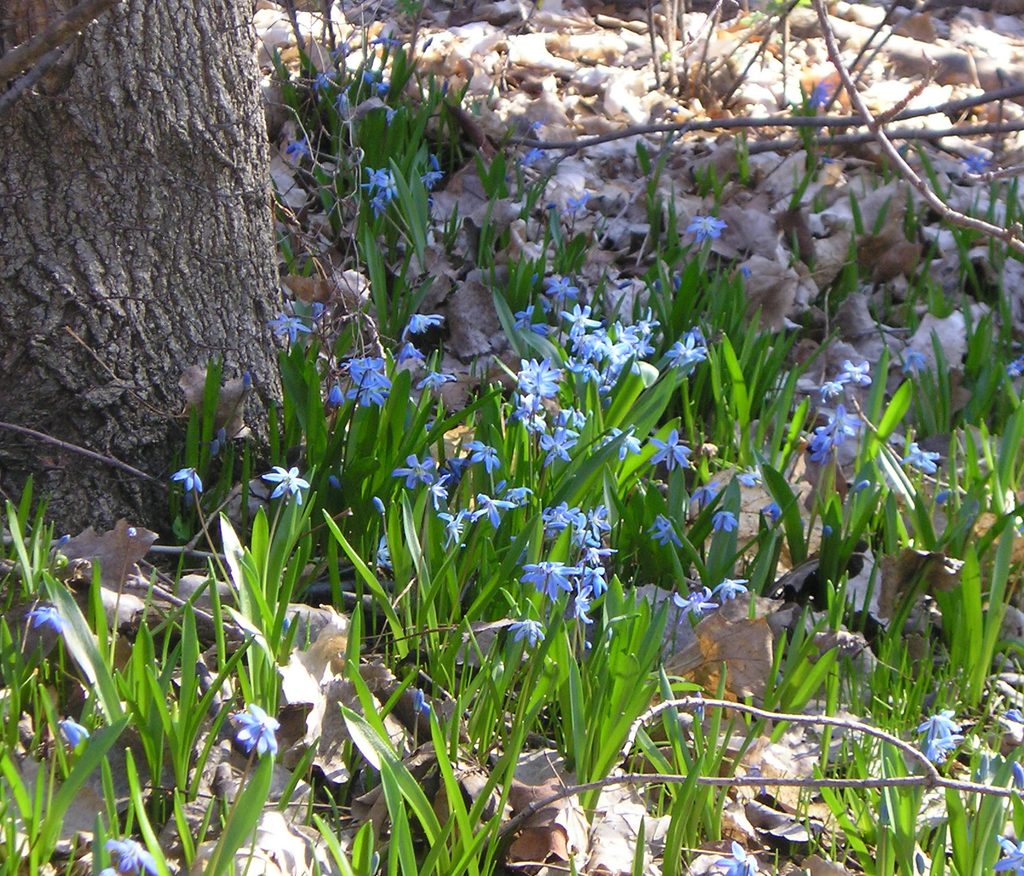Identification:


Leaves: Leaves are narrow, dark green and and grass-like. They emerge in the early spring
Flowers: The flowers emerge shortly after the leaves in early spring. Flowers are an intense royal blue and each stalk supports one to three flowers. Individual flowers can be one inch across with 6 blue petals and a single dark blue vein running down the middle. Bloom period is 2-3 weeks.
Seeds: Pods start out green but turn brown as they mature. The bumpy, roundish seed capsules contain several reddish-brown seeds each which they release by bursting.
Roots: Siberian Squill grows from a bulb, during the summer, fall and winter, the dormant bulbs are covered in a loose dark tunic.
Reasons Siberian Squill is a Problem:
- Siberian Squill is a very hardy wildflower, easily able to withstand late cold snaps bringing snow and freezing temperatures.
- Siberian Squill is not bothered by voles, chipmunks, rabbits, or deer.
- Siberian Squill handles high levels of disturbance well, often resprouting after being uprooted.
Other Info:
Siberian Squill is was introduced to North America from Eurasia and continues to be cultivated, as it has been since 1796. It is one of the very first flowers to bloom after the snow melt in early spring, and is easily identified, often growing in large clumps. Siberian Squill requires abundant sunlight but is often found as a ground cover in woodlands, growing early in the spring before trees are leafed out. Squill conducts all it’s growing early in the spring and dies back once the forest trees are fully leafed out. It is very commonly found in residential gardens and yards, from which it has spread to the Arboretum. Because Siberian Squill has the potential to crowd out native wildflowers, Arboretum staff are monitoring its presence in the arboretum and may begin control measures if it threatens high quality native plant communities.
Cowling Arboretum Procedures for Removal:
The Cowling Arboretum is not currently targeting Siberian Squill for removal but has several herbicide trials underway to determine the best control methods. Squill is difficult to control in natural settings using cultural methods as the small bulbs are deep in the soil and many seeds are produced.